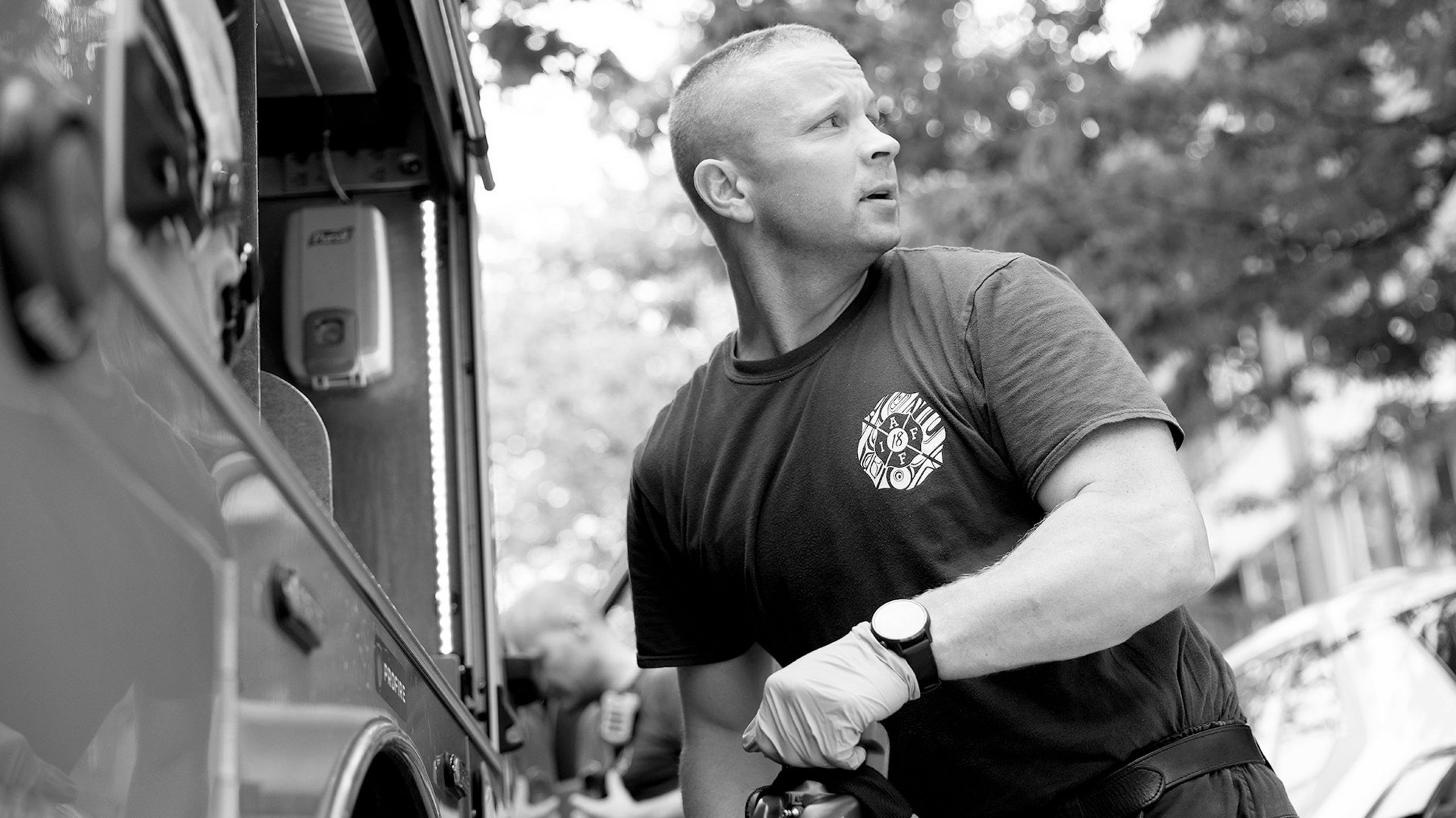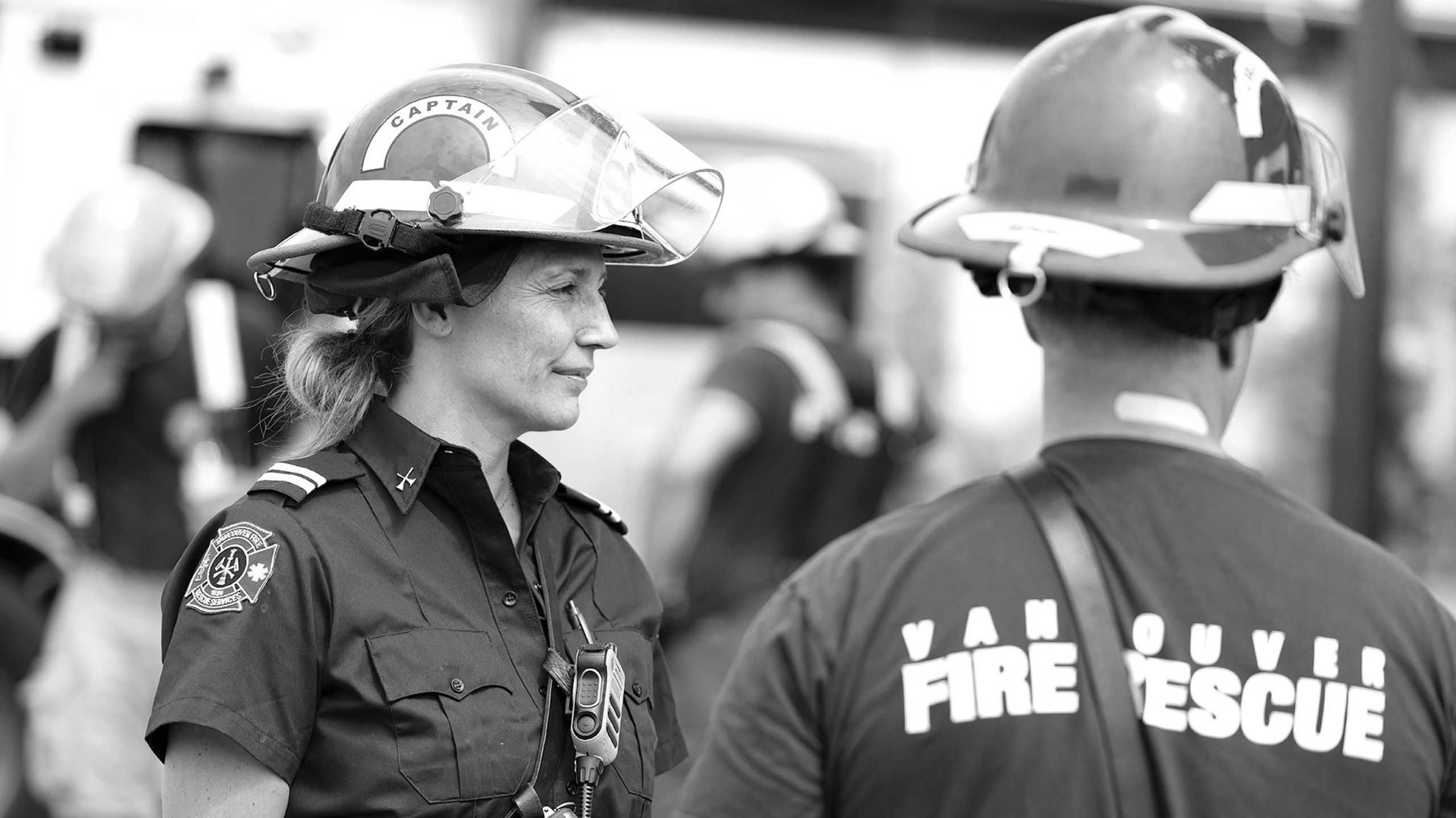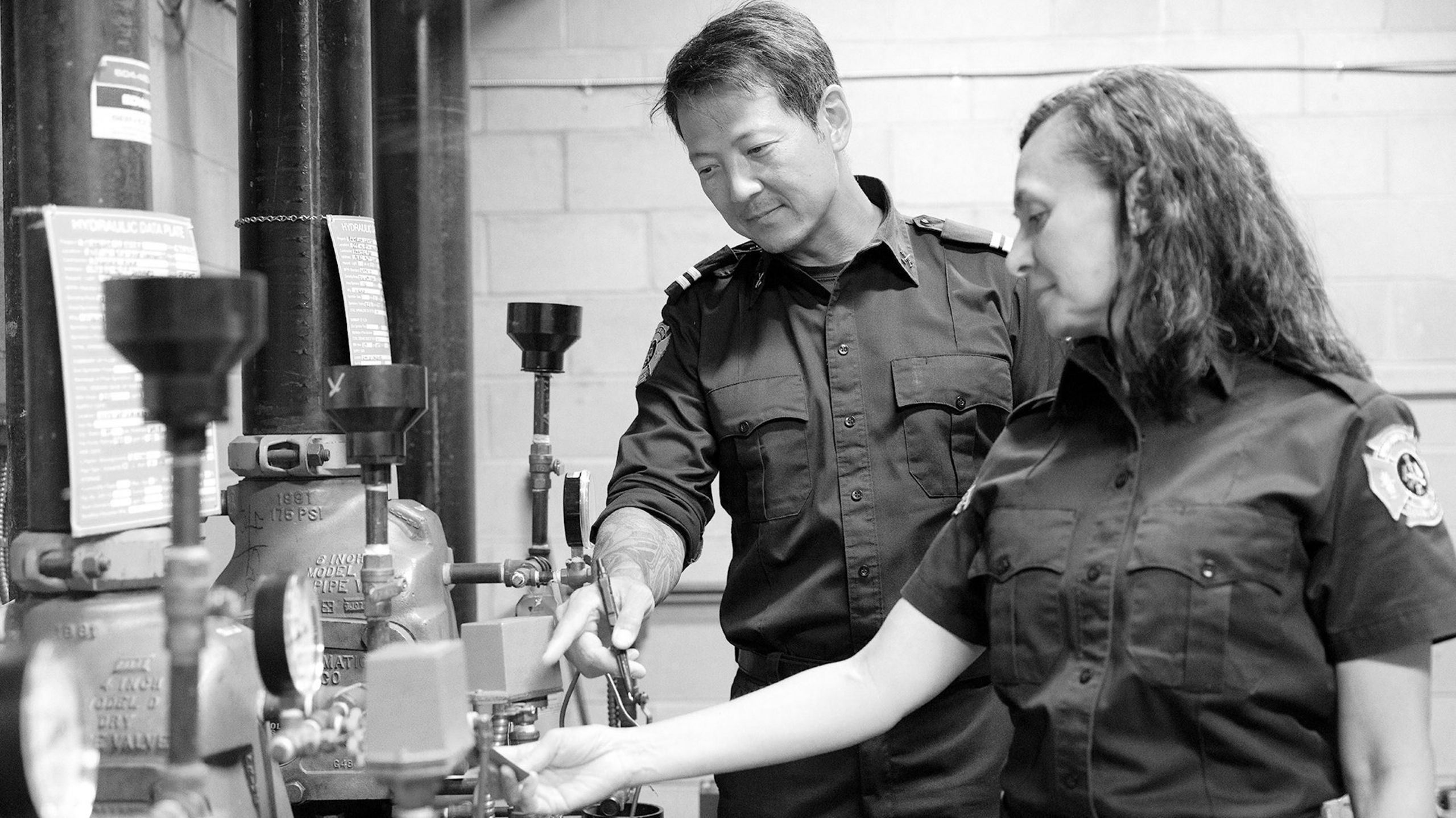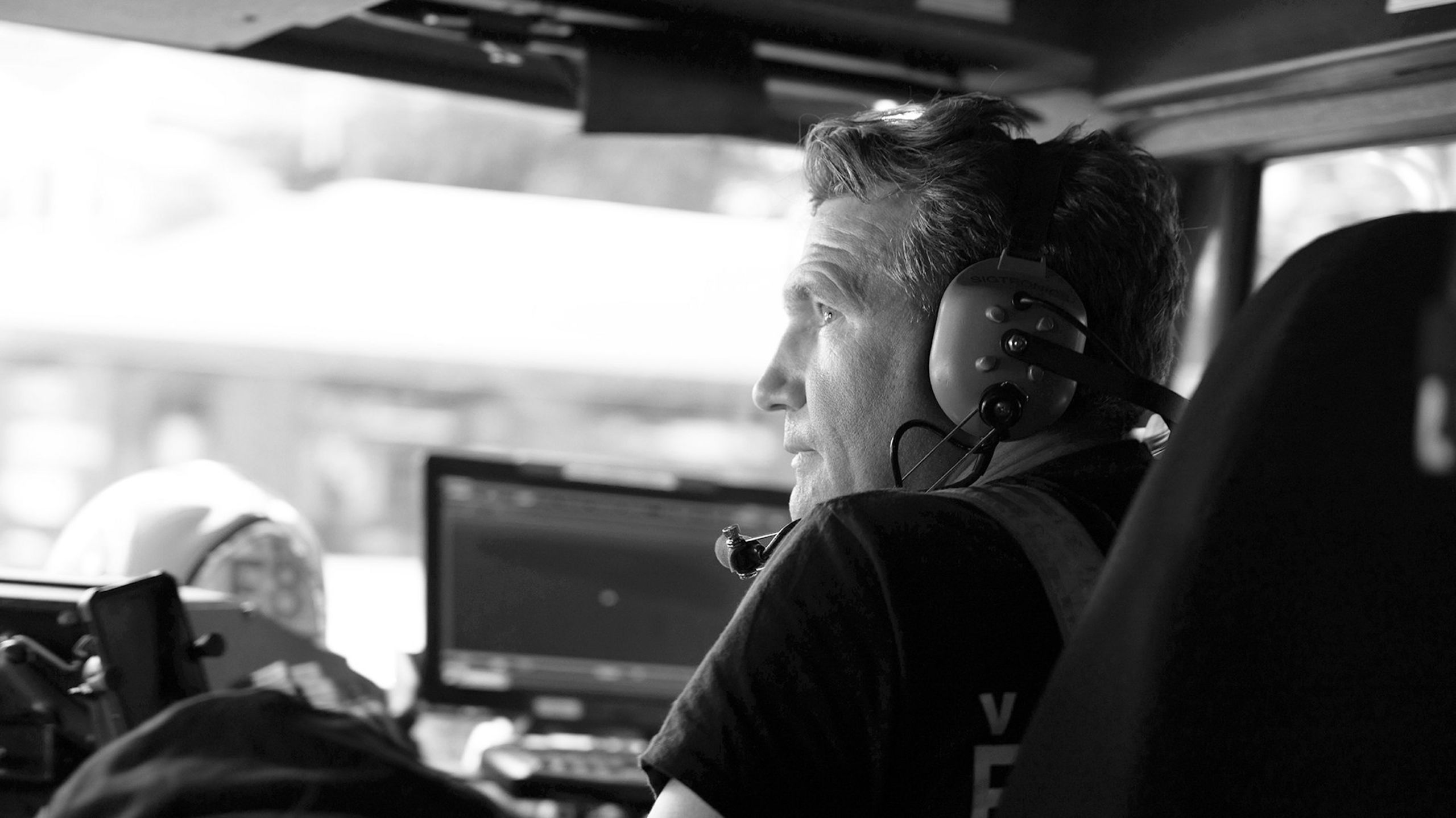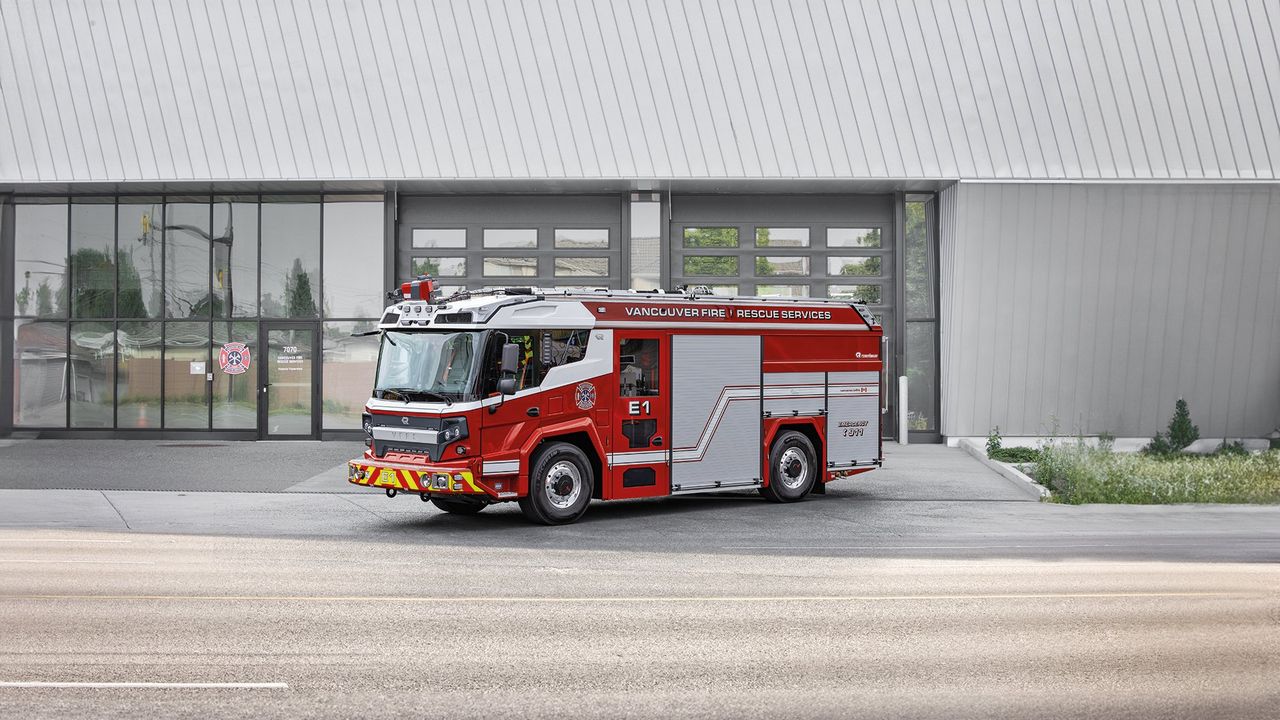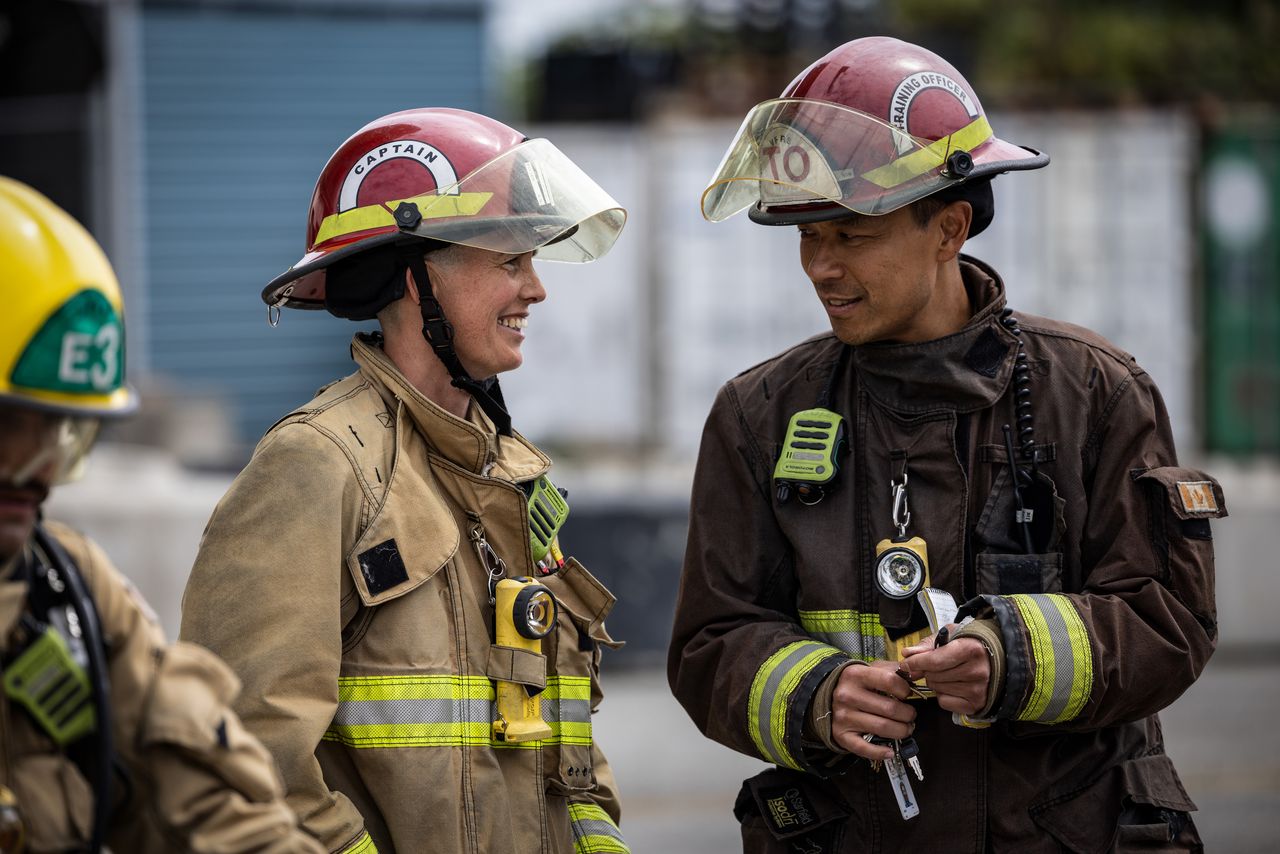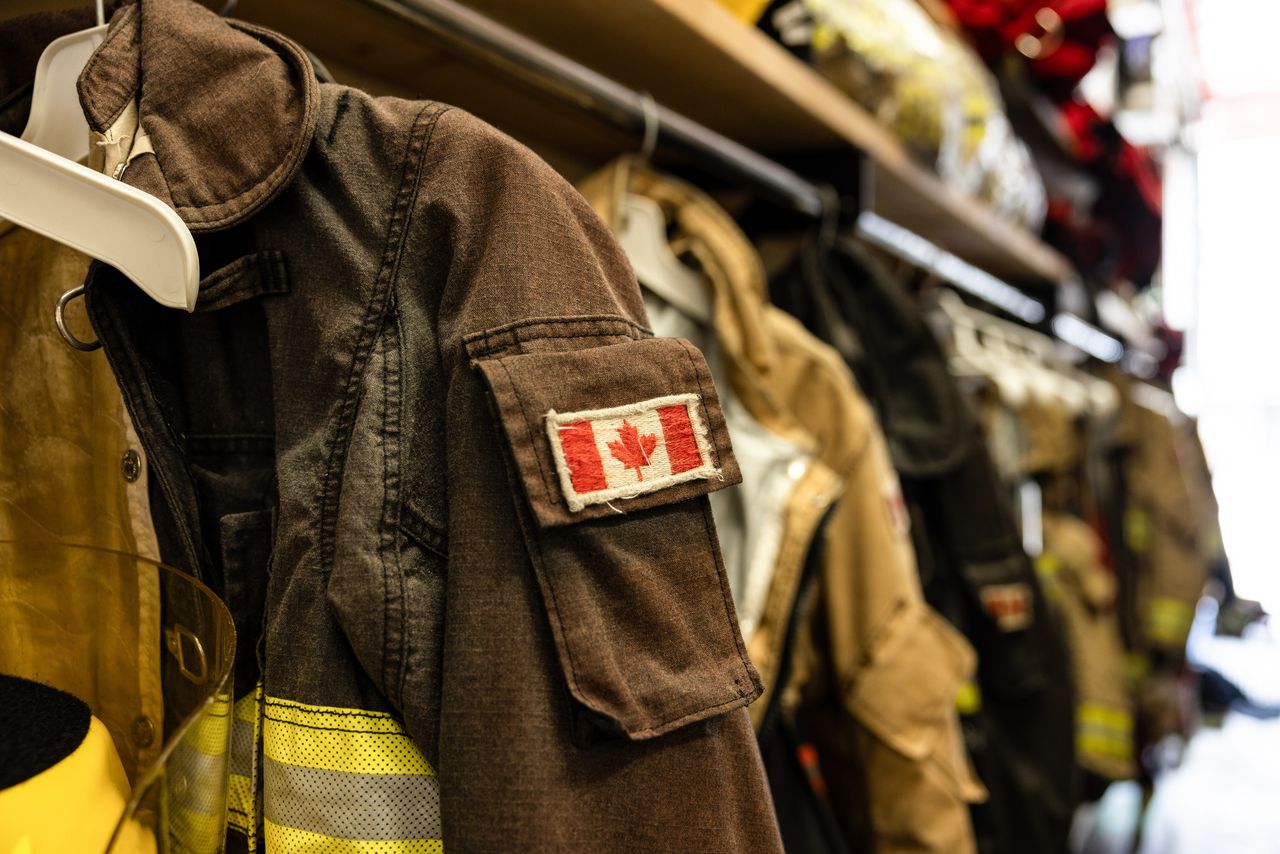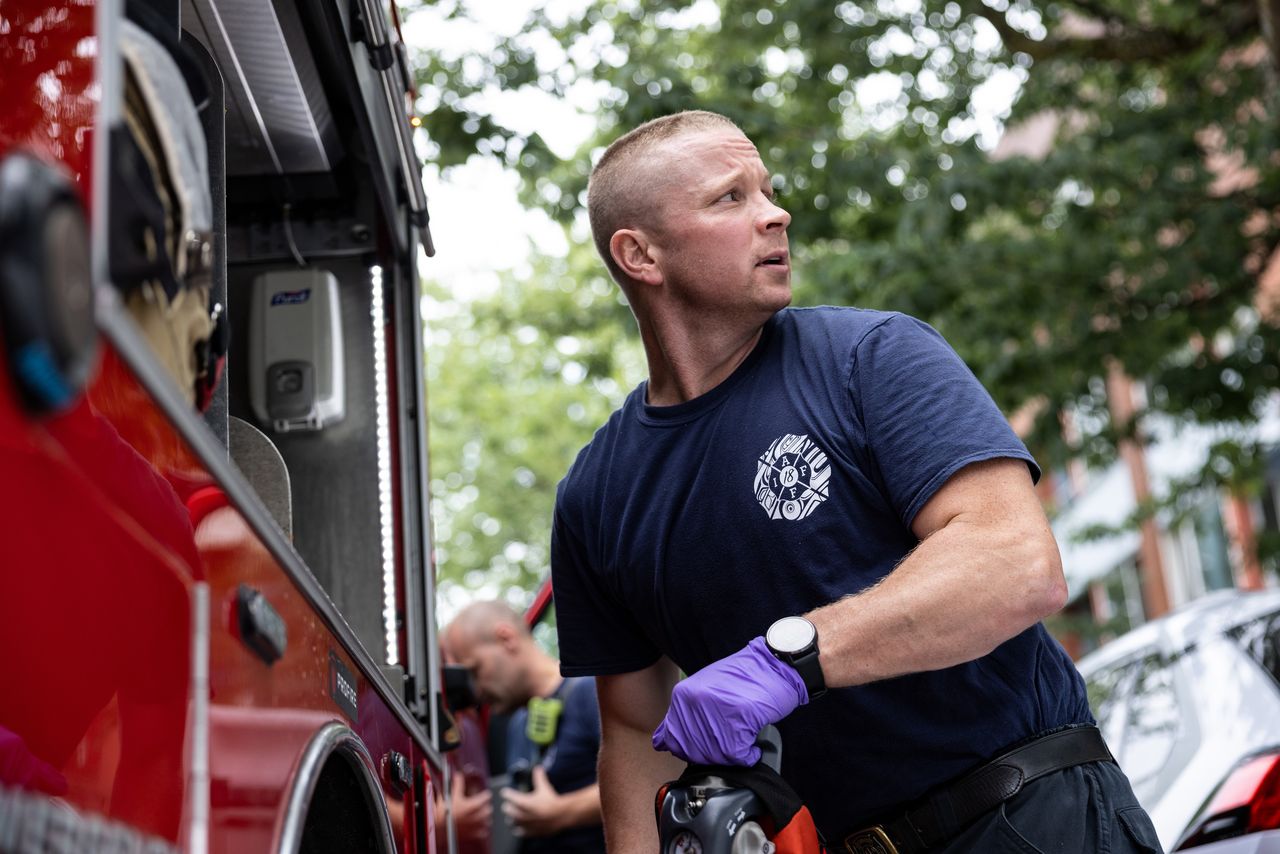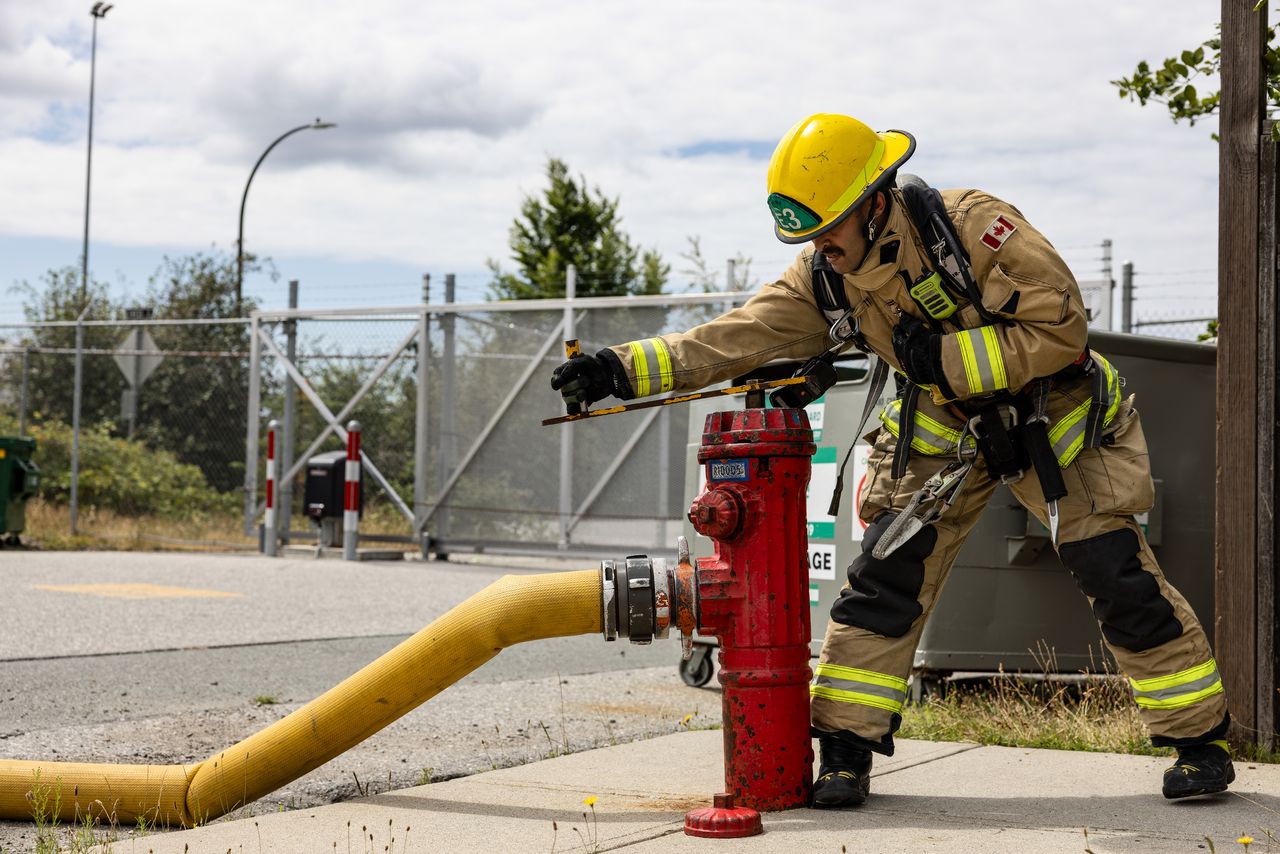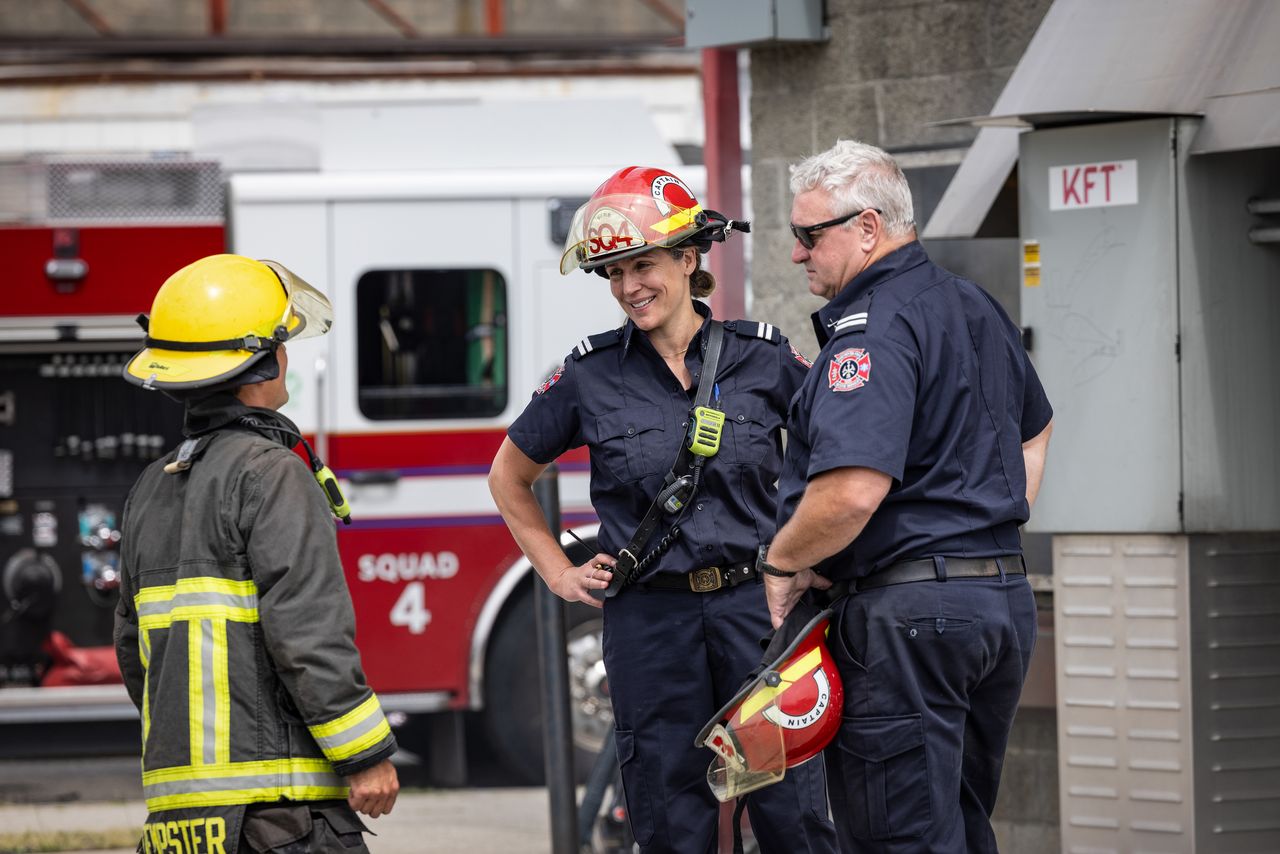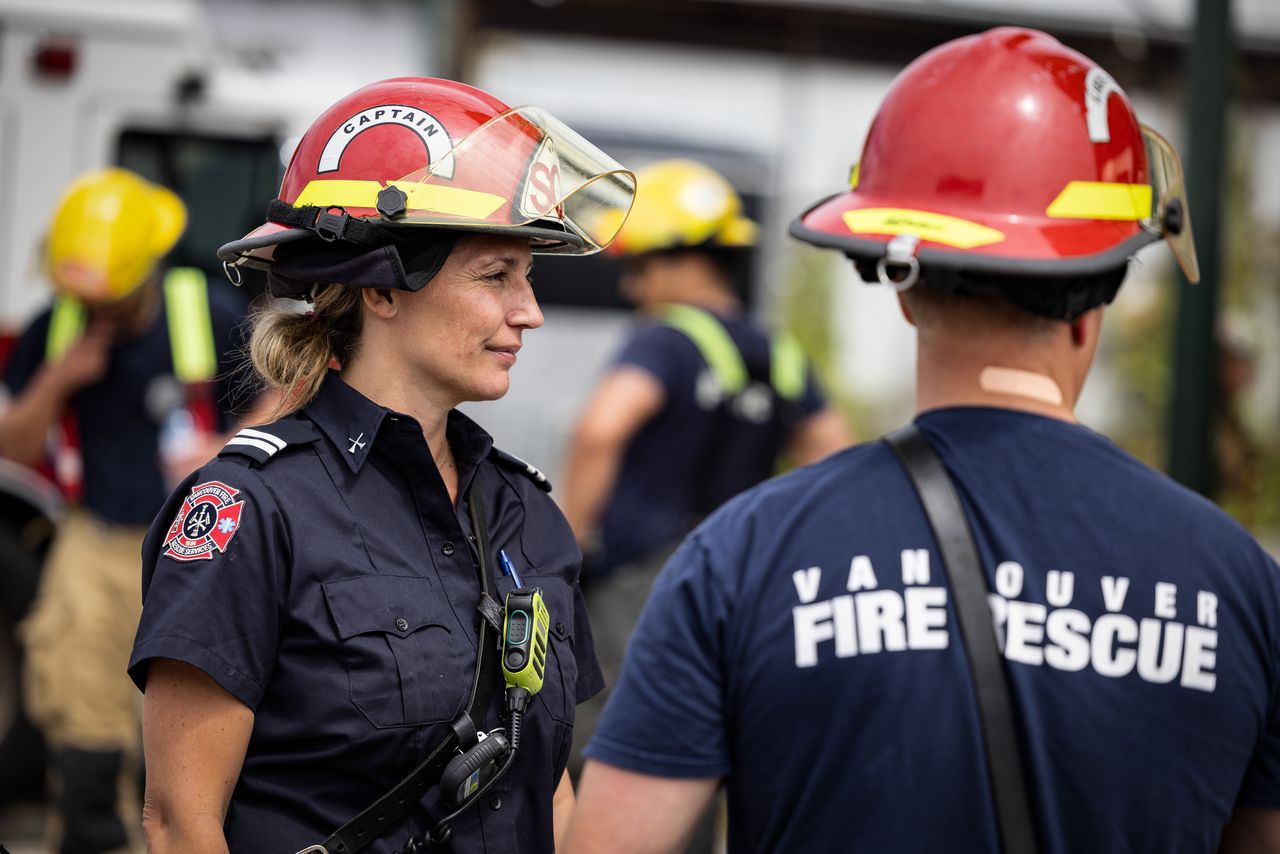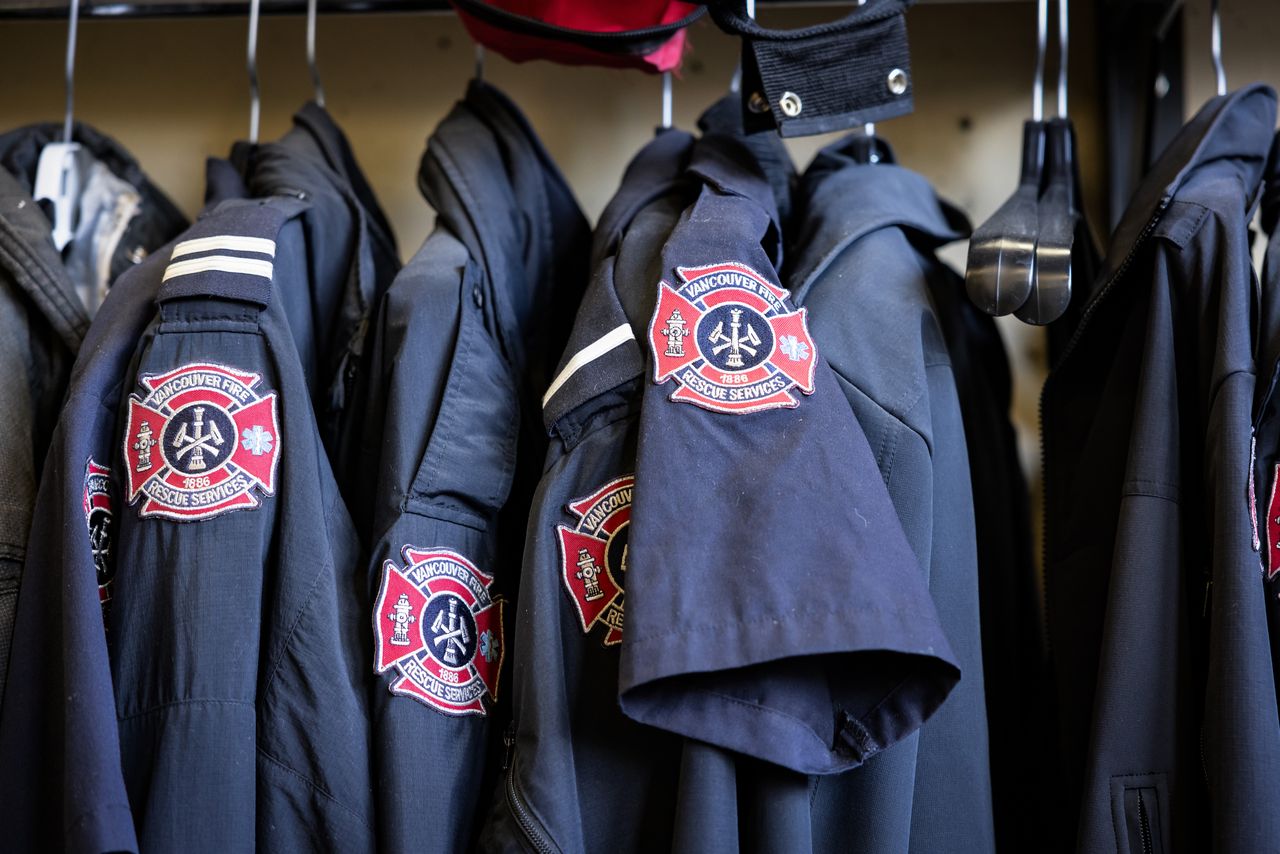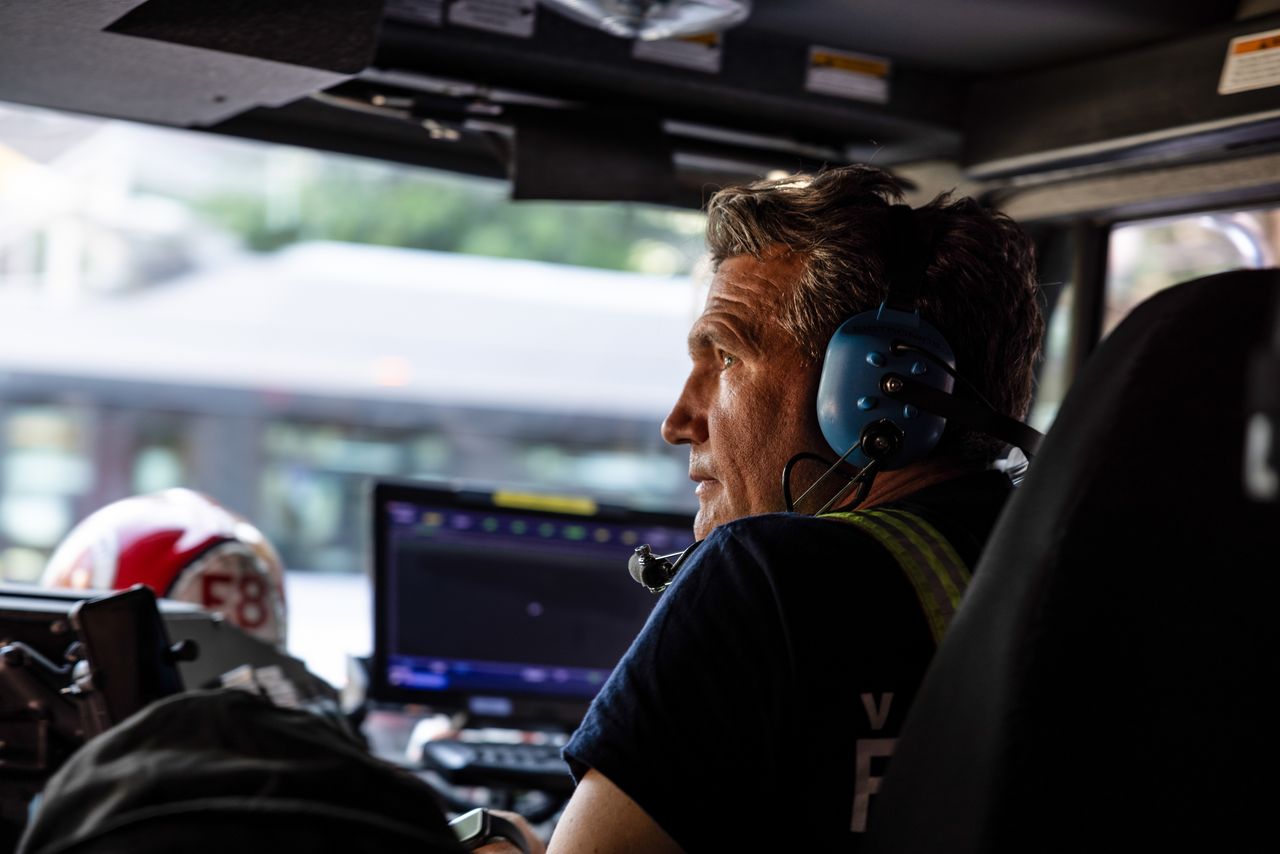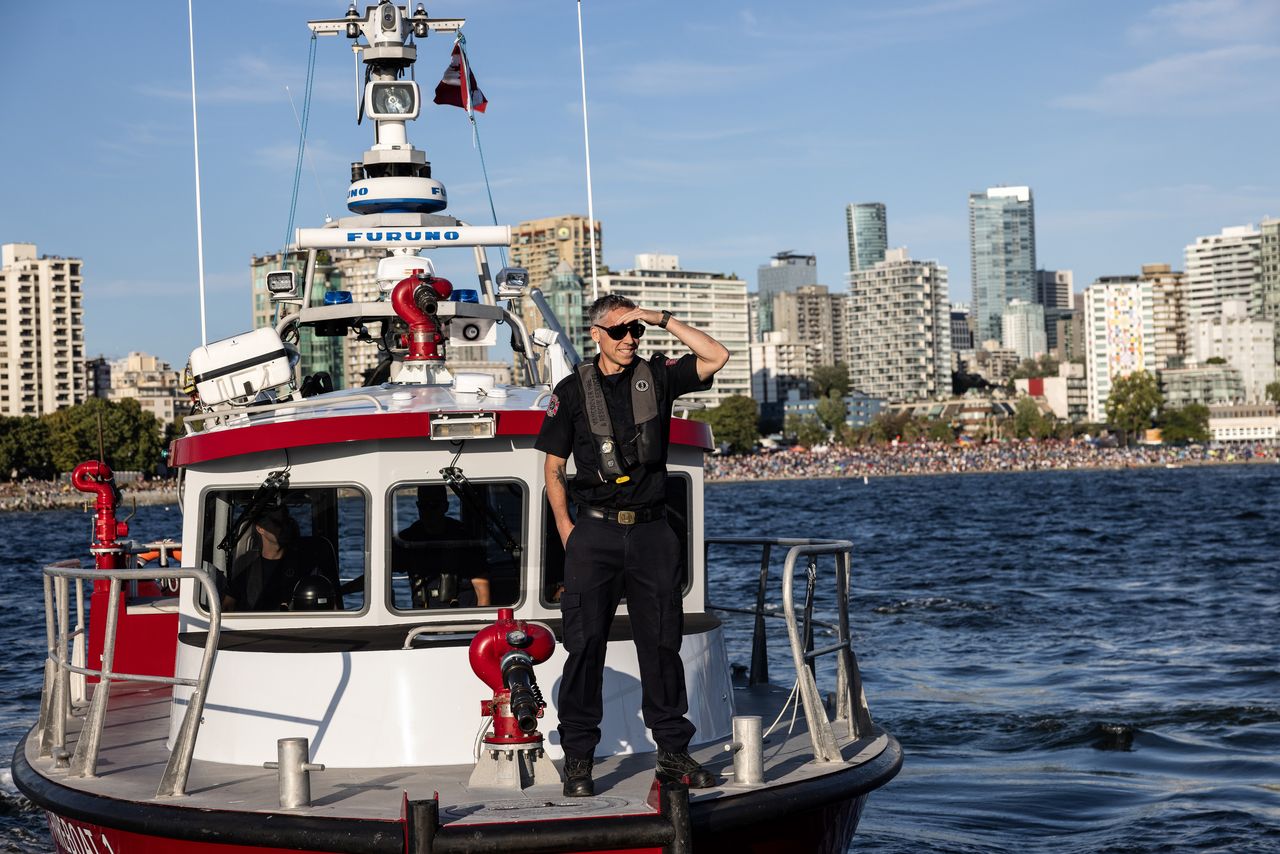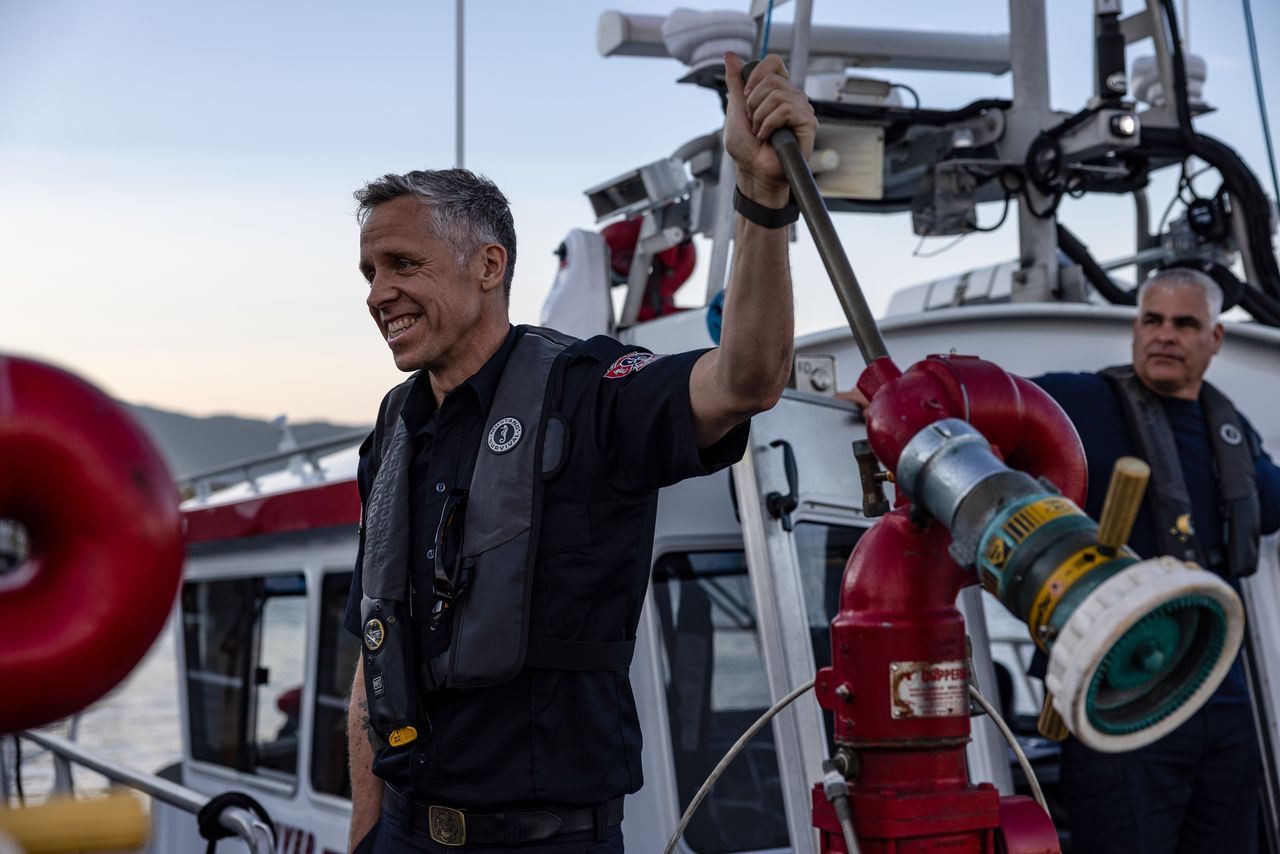Green city electric vehicle
in continuous use.
Vancouver, a city of contrast
Vancouver is located on Canada’s west coast near the U.S. border. It is the country’s eighth-largest city and hosted the Winter Olympics in 2010. Overlooked by mountains on one side, it has an ocean view and the largest port in Canada by tons of cargo on the other. Additionally, it is the continent’s third-most important movie production city after Los Angeles and New York, which is why Vancouver is often referred to as “Hollywood North.” Oh, and it will host the FIFA World Cup in 2026. So, definitely not a sleepy town, certainly not for Karen Fry and Tyler Moore, two of the highest-ranking officers of the Vancouver Fire and Rescue Services. But they have different reasons. Worlds collide in Vancouver, as Karen explains: The entire region, with a population of 2.5 million, has some of the poorest residents in North America, but at the same time, there are super-wealthy people and housing costs are skyrocketing. The city itself, with 700,000 inhabitants at its center, is the most densely populated in the country. “We have about 19,000 people per square kilometer in the inner city,” Karen quotes a statistic, “which is the fourth-highest value in North America.”
Ten firefighting missions each day
The city by the sea recently clocked 3,600 fires per year. That’s an average of ten reported fires per day, keeping the 150 firefighters on their toes and in their forty-three vehicles 24/7. “The number of fires has virtually exploded in the last few years,” states Deputy Fire Chief Tyler. “Not that long ago, we had about 1,600.” What are the reasons for this uptick? “During COVID, we began seeing more fires related to cooking and smoking materials,” Fire Chief Karen says drily. Additionally, the number of battery fires in e-bikes and e-scooters is on the rise. “It’s not the vehicles that are to blame but the users. They lose their chargers and start experimenting with workarounds.” Nowadays, this only elicits a faint smile from Karen and Tyler.
Do people notice the effects of climate change in Vancouver? Yes. They also have forest fires and wildfires, as Karen reports. Last year, one hundred people died as a direct result of the heat—despite living so far north and by the sea.
An RTX for the Green City
Vancouver still sees itself as a green city and occupies one of the top places in this regard internationally. People are proud of this fact. Their city has the largest urban park in all of North America and many bike lanes that are constantly expanded. Officials want the city to be carbon-neutral by 2050. Which makes a low-emission rescue vehicle like the Rosenbauer RTX a perfect fit for this long-term strategy. “Our top priority was not to be environmentally friendly, though,” Karen clarifies sternly. “What was more important with this purchase was that the vehicle can be lowered, thus making it easier and safer for the rescue workers to do their job.” Tyler, whose main responsibilities include the technical gear and firefighting fleet, adds that the subject of noise reduction also plays a major role. “In conventional vehicles, the crew sits around the engine and the gear. And that can be really loud.” The RTX has quiet electronic motors, and the crew has the cabin for itself. This allows them to communicate with each other during the ride and even look each other in the eye thanks to the cabin layout.
Outstanding versatility, wide range
Another advantage of the RTX is its versatility and compact size, little overhang, and its tight turn radius. All this fits the requirement profile of the city, as Karen explains: “In Vancouver we have a ton of alleys.” And the population density is enormous, especially downtown. This is where the RTX comes in, with its almost 1,900-liter water tank (500 US gallons), its large, 5,500-liter-per-minute electric N55 pump (1,453 US gallons), its RFC Admix Variomatic 48 foam proportioning system, and its RM35 roof turret. “But actually,” Tyler laughs, “the RTX should also be used in high-risk areas and industrial environments. Basically, we want to use it everywhere.”
The difference between this RTX and its European sibling lies in the hose storage, among other things. In North America, the hoses are not rolled but folded and stored in so-called hose beds in the vehicle rear. Three more crosslays are stored across the vehicle’s midsection for rapid response, and the hoses are preconnected to the discharge, so they can be pulled out from either side of the truck.
A great team
Ever since they ordered the RTX, Tyler has visited the Rosenbauer plant in Leonding three times and has conducted the final inspection himself. The fifty-three-year-old firefighter, who has been employed by the Vancouver fire service since 1994 and is now in charge of the entire fleet as well as emergency management, and is part of a perfectly functioning leadership team with Karen. He has a lot of fire expertise and she a wealth of management experience. Karen, a “granny of two and mother of five,” changed careers fairly late. In 1999, she entered the fire department in Nanaimo on Vancouver Island, where she worked at the dispatch center. She then became deputy chief in Surrey, southeast of Vancouver, switched back to Nanaimo, and became the general manager of the Fire and Rescue Services in Vancouver in 2021. “I was never a firefighter myself,” the fifty-six-year-old woman says candidly and nonchalantly. “I have 900 people in my team whom I can rely on.” She knows that her position prioritizes other qualities: “My goal is to ensure the department has the support and appropriate resources it needs to protect the City of Vancouver.”
Still, what about women at the Vancouver Fire and Rescue Services? The percentage of women is between six and seven—much higher than the nationwide average. “And we are the first Canadian fire department with a diversity and inclusion officer.” It’s easy to see that Vancouver is a progressive city. Not just in terms of firefighting vehicles.
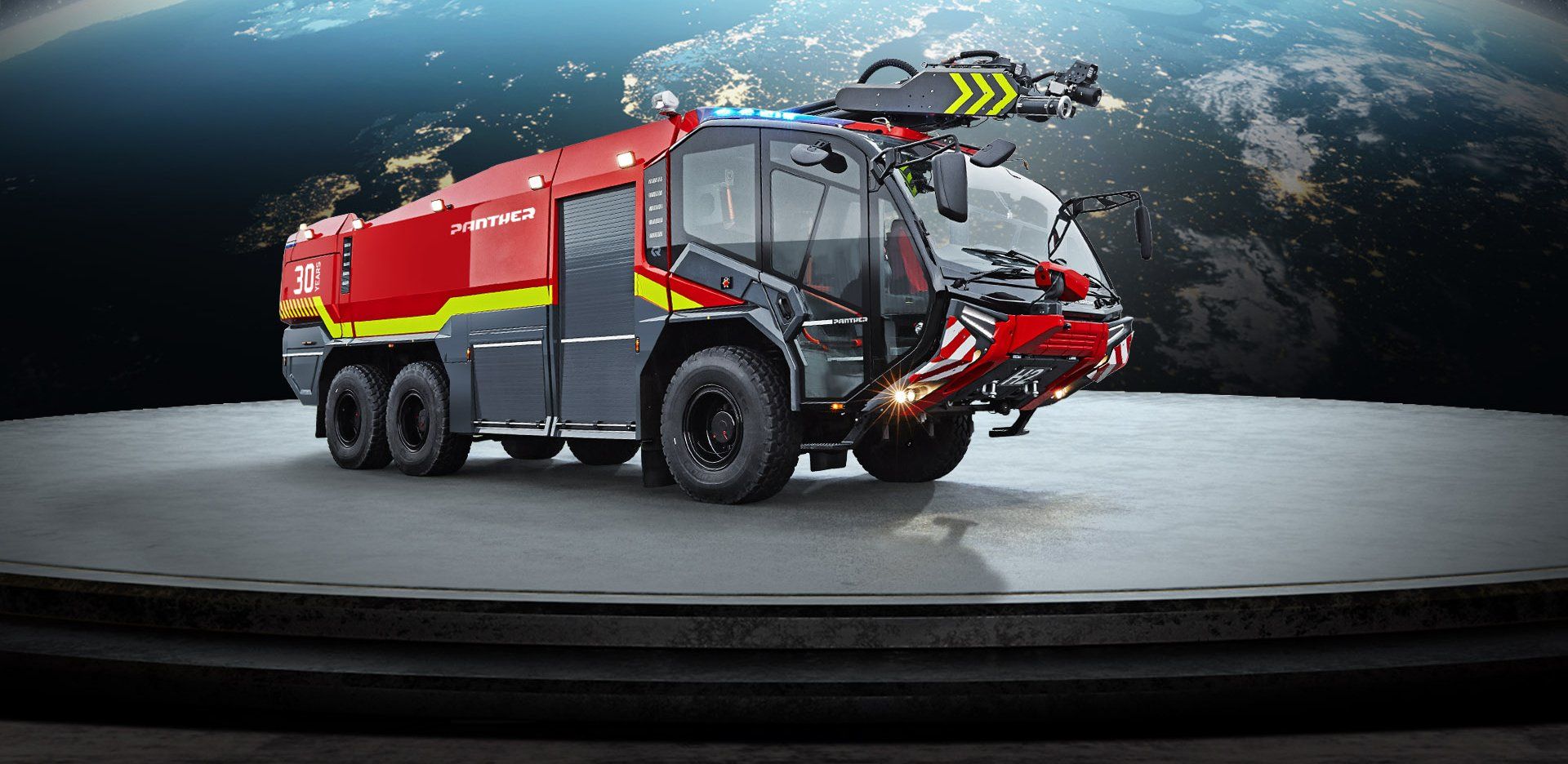
Register now for the Rosenbauer Newsletter & always be well informed!
Contact
Rosenbauer International AG
Paschinger Str. 90
4060 Leonding, Austria
office@rosenbauer.com
